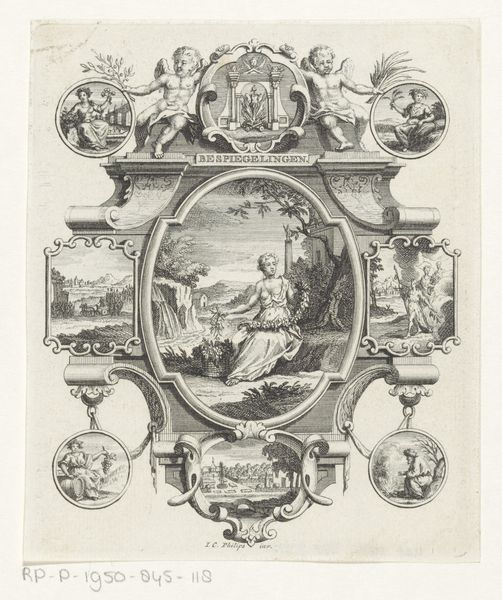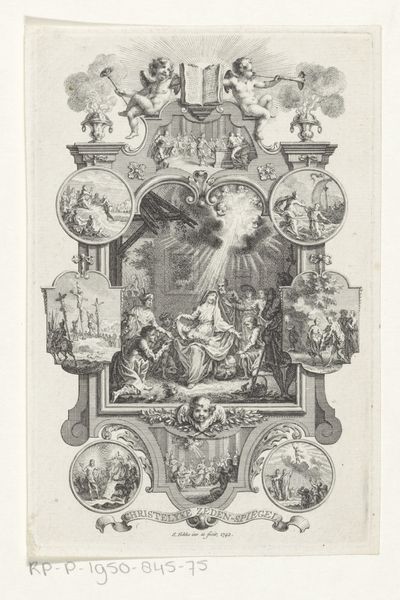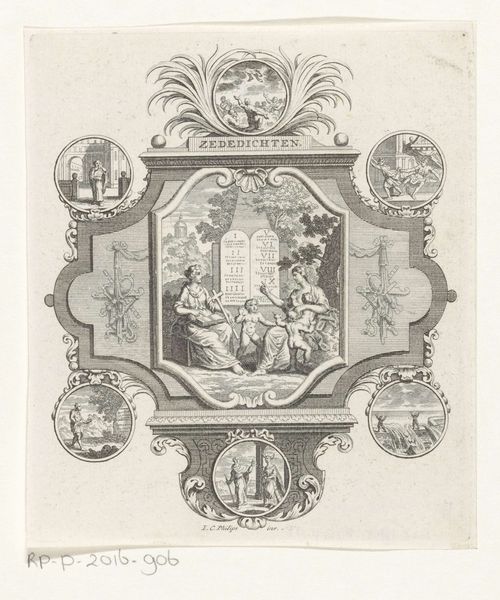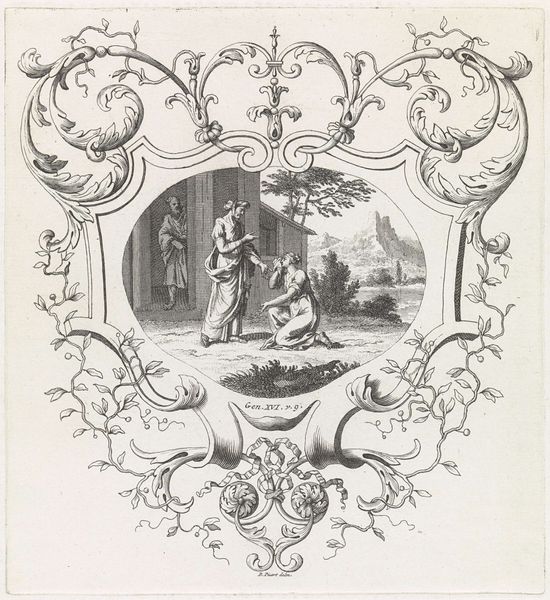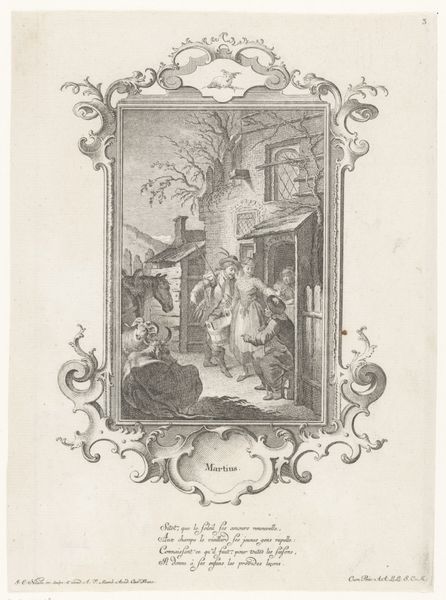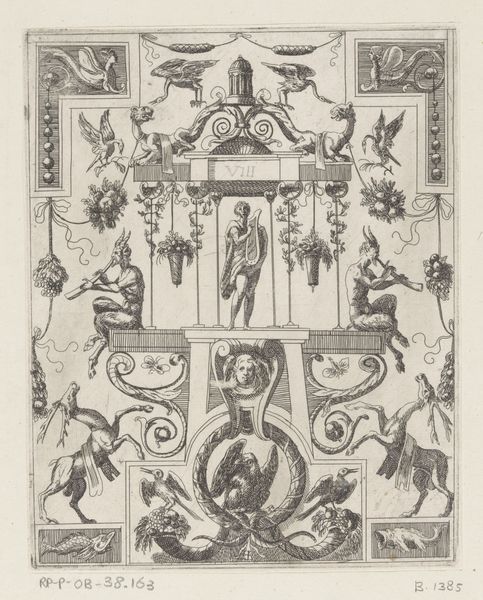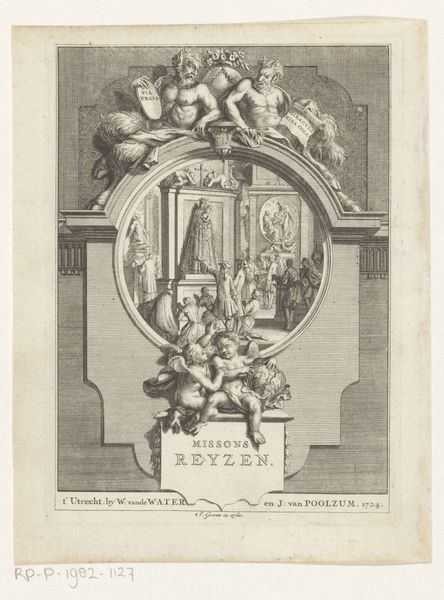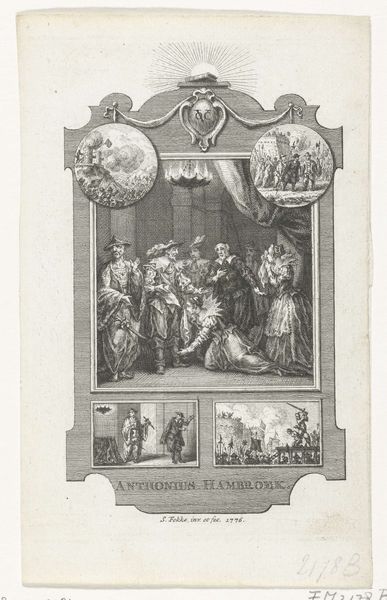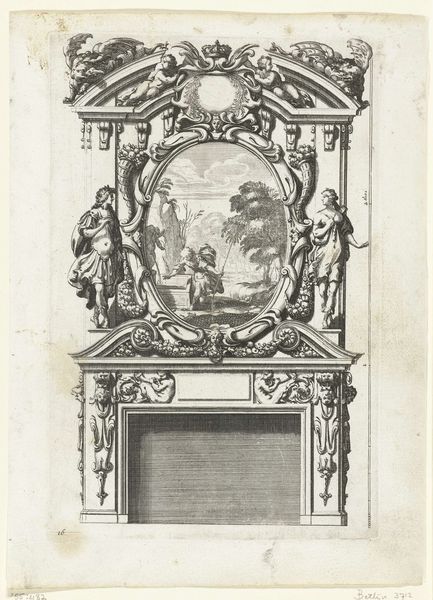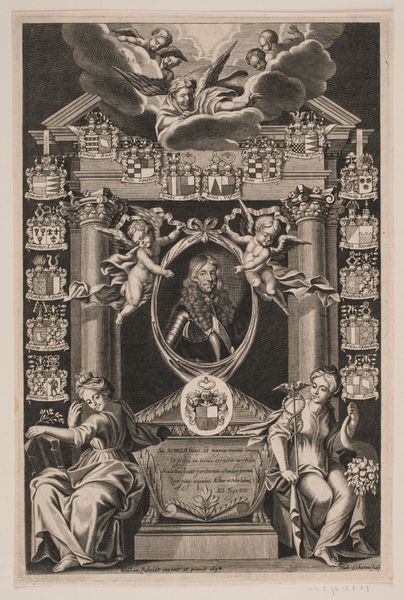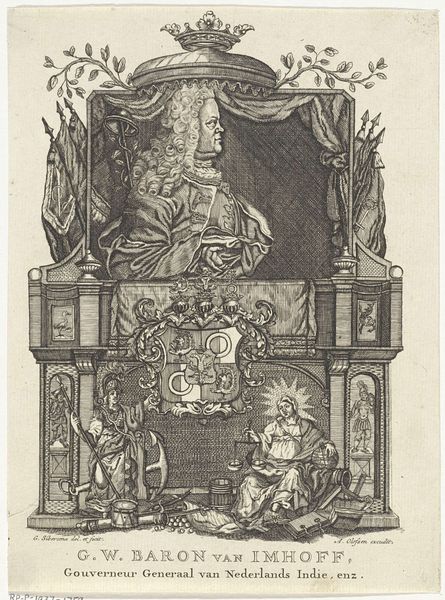
print, engraving
#
light pencil work
#
quirky sketch
#
baroque
#
pen drawing
# print
#
pen sketch
#
old engraving style
#
landscape
#
figuration
#
personal sketchbook
#
pen-ink sketch
#
line
#
pen work
#
sketchbook drawing
#
history-painting
#
sketchbook art
#
engraving
Dimensions: height 135 mm, width 116 mm
Copyright: Rijks Museum: Open Domain
Jan Caspar Philips created this etching around the mid-18th century; it's an intricate composition featuring a cartouche with a tomb scene set within a landscape. The monochromatic rendering, typical of etchings, emphasizes line and form, guiding our eyes through the image's complex structure. The central scene, framed by an elaborate cartouche, captures a moment of mourning at a gravesite. Note how Philips uses framing devices, not only with the cartouche itself, but also with smaller circular vignettes surrounding the central image. Each vignette presents a different perspective on life and death, creating a semiotic system. The cherubs, skulls, and various human figures operate as signs, contributing to a broader meditation on mortality. Philips uses the etching technique to destabilize the viewer's perception by questioning fixed meanings about life and death. It invites ongoing interpretation, reflecting the complex interplay between art, philosophy, and cultural understanding.
Comments
No comments
Be the first to comment and join the conversation on the ultimate creative platform.
